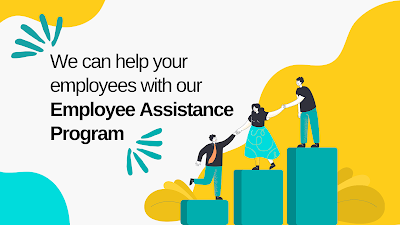Blog
Blog

Employment Document Forgery - What employer should do?
January 15 2024
Today, I wanted to bring up this topic here as am facing many proxies in the interview and also there are many fake certifications, Pay slips, and Experience certificates sometimes edited PF snapshots is being produced by some of the candidates to the companies.
As am into the recruitment business, I had handled with various candidates who have done these activities and clients simply rejected them. In some of the cases, its known only after few months are years.
There are few ACTs applicable for the employer to take action, if they are officially employed with the organisation.
Following an article on the business daily that cited job loss by civil servants due to the presentation of fake certificates; I thought these weeks we would delve into a few insights on the presentation of fake certificates to employers:
Obtaining employment or even a promotion by presentation of fake or altered certificates places an employer at an obligation to prove both criminal involvement (forgery or alteration of documents) and adherence to disciplinary procedure.
Fraudulently misrepresentation of one's academic grades is an act of dishonesty and amounts to a valid and fair reason that justifies summary dismissal from service;
Presentation of fake academic certificates falls within the ambit of a myriad of criminal offences. The best examples would be the offence of forgery under the Penal Code and (in the instance of a secondary school certificate)the KNEC Act and therefore an employee can be charged for these offences in court;
Under Section 44(4) (g) of the Employment Act, an employer is entitled to summarily dismiss his employee if: “an employee commits, or on reasonable and sufficient grounds is suspected of having committed, a criminal offence against or to the detriment of his employer or his employer’s property.”
In determining the validity of an academic certificate; the employer may contact the issuing institution for verification of the details of the certificate and authentication; Fadhil Juma Kisua v Kenya Ports Authority [2016] eKLR
Where an employee is suspected to have presented fake certificates or misrepresented their academic grades or any other documents related to employment to an employer, they should be served with a Show Cause letter stating the offence in respect of which the employer is contemplating punishing them and the employee should respond to the letter;
The employee then reserves the right to be invited to a personal hearing and informed of their right to be accompanied to the hearing by a fellow employee or union official of their choice.
The employer should consider the employee's defence and either accept it or dismiss it as unsatisfactory; subsequently, the employer should reserve the right to appeal; David Mwambi Matambo v Kenya Ports Authority [2017]
An employee who has forged their academic records cannot be granted the relief of reinstatement especially where they obtained a higher cadre job that they are not qualified for.
Secondly, employees who have committed the offence of fraud and/or forgery against their employers by presenting fake academic Certificates that enabled them to secure employment cannot be reinstated;
The biggest takeaway is that even in such cases the employer had no right to dismiss the employee without first inviting them to a disciplinary hearing as contemplated by section 41 of the Employment Act.
A good place to start would be to encourage employees to register with the Kenya National Qualifications Authority for educational verification and other documents can be verified by the HR directly with the previous organisation, who have a system that allows employees to create profiles and upload academic certificates thereon. This ensures that the Qualifications are validated by the authority to be Authentic and Genuine.
Reference link on the real cases:
https://www.hrkatha.com/legal/no-mercy-for-employees-submitting-fake-documents-delhi-high-court/

Have you completed 5 years of experience in your current company? then you must know this...
In India, the Payment of Gratuity Act, 1972, governs the payment of gratuity to employees. The Act applies to establishments employing ten or more persons and is designed to provide a monetary benefit to employees for their long and continuous service to the organization
Key provisions of the Payment of Gratuity Act, 1972:
Eligibility:
Employees who have completed at least five years of continuous service in an establishment are eligible to receive gratuity. However, certain exceptions apply in case of death or disability.
Calculation of Gratuity:
The gratuity amount is calculated based on a formula:
(Last drawn salary * 15 / 26) * Number of years of completed service
Maximum Limit:
As of my last knowledge update in January 2022, the maximum amount of gratuity payable under the Act is Rs. 20 lakhs.
Payment Events:
Gratuity is payable on the employee's retirement, resignation, superannuation, or death. In the case of death or disability, the five-year eligibility criterion is waived.
Nomination:
Employees are allowed to nominate a family member to receive the gratuity amount in the event of their death.
Applicability:
The Act applies to employees in factories, mines, oilfields, plantations, ports, railways, and certain other establishments.
Gratuity Fund:
Employers of certain establishments may establish a gratuity fund for the purpose of providing gratuity benefits to employees.
It's important to note that the specifics of the Payment of Gratuity Act, 1972, including eligibility criteria, calculation methods, and maximum limits, may be subject to amendments. Therefore, it's advisable to refer to the latest version of the Act or consult legal experts for the most up-to-date information.

Which option is more advantageous: working as a contractor or as a full-time employee?
The decision between working as a contractor or a full-time employee depends on individual preferences, career goals, and the specific circumstances of the job and industry. Both options have their advantages and disadvantages:
Contractor:
Advantages:
Flexibility: Contractors often have more flexibility in terms of work hours and locations.
Varied Projects: Contractors may work on different projects with various clients, gaining exposure to diverse experiences.
Higher Earnings: Contractors may have the potential for higher hourly rates, and they can negotiate project-based compensation.
Disadvantages:
Uncertain Income: Contractors may face periods of unemployment between contracts, leading to income uncertainty.
No Benefits: Typically, contractors do not receive employee benefits such as health insurance, retirement plans, or paid time off.
Limited Job Security: Contract positions may be temporary, with no long-term job security.
Full-Time Employee:
Advantages:
Job Security: Full-time employees generally have more job security and stability.
Benefits: Employees often receive benefits such as health insurance, retirement plans, paid time off, and other perks.
Steady Income: Full-time employees receive a regular and steady income, providing financial predictability.
Disadvantages:
Less Flexibility: Full-time employees may have less flexibility in terms of work hours and may be tied to a specific location.
Limited Variety: Employees may work on similar projects within their role, potentially limiting exposure to diverse experiences.
Lower Earning Potential: While full-time employees receive a steady income, their earning potential may be limited compared to high-paying contract roles.
Ultimately, the choice depends on your personal preferences, career goals, risk tolerance, and the specific dynamics of the job market in your industry. Some individuals prefer the stability and benefits of full-time employment, while others value the flexibility and potential for higher earnings that contracting can offer. Consider your priorities and long-term goals when making this decision.
--By Thanupa...

Do you think, firing an employee is ethical based on the behaviour outside the organisation?
The ethical considerations of firing an employee depend on various factors, including the circumstances surrounding the termination and how it aligns with legal and ethical standards. In general, termination may be considered ethical in situations such as Performance Issues, Misconduct, Downsizing or violation of company policies
Today we all live in a ‘socially woke’ era, where one wrong step can put one in the spotlight zone of hashtags, boycotts, bans and cancellations. Companies and organisations are also quick to take action against those who tarnish their reputation even outside working hours.
Whether employees should be fired for their behaviour outside the workplace is a complex and controversial question.
On the one hand, an employee’s actions outside of work may reflect poorly on the company and damage its reputation, On the other hand, an individual’s behaviour outside of work is generally considered to be their own business, and it may be unethical or illegal to terminate someone’s employment based on their personal life or what they do beyond the workplace.
After Few research, legends has advised to be socially responsible, organised and people to be objective in our actions, Our actions have an impact on society and the country as a whole.
“Professionalism is expected at the workplace, which entails a certain level of decorum and expected behaviour. However, it is unfortunate that some people engage in bad behaviour that can bring disrepute to themselves and their employers.
Ultimately, ethical considerations in termination involve a balance between the employer's needs and the fair treatment of employees. Open communication, fairness, and adherence to legal standards contribute to ethical employment practices.
-----By Thanupa...

Why companies should cross-train the recruiter/ HR for effective recruitment?
Cross-training recruiters can be highly beneficial for effective recruitment in several ways:
Versatility:
Cross-training equips recruiters with skills in various aspects of the recruitment process. This versatility allows them to handle different roles, positions, and challenges within the organization.
Workload Distribution:
In a dynamic recruitment environment, there may be fluctuations in workload and priorities. Cross-trained recruiters can seamlessly step in to assist with urgent tasks or handle specific responsibilities during peak periods.
Faster Response Time:
With cross-trained recruiters, there's a reduced dependency on specific individuals for particular tasks. This can lead to faster response times in handling candidate inquiries, interviews, and other recruitment-related activities.
Enhanced Collaboration:
Cross-training fosters collaboration and teamwork among recruiters. When team members understand each other's roles, they can collaborate more effectively and provide mutual support.
Reduced Bottlenecks:
In the absence of cross-training, a bottleneck may occur if a specialized recruiter is unavailable. Cross-trained recruiters can step in, preventing delays in the recruitment process.
Adaptability to Changing Needs:
Cross-training ensures that recruiters can adapt to changing organizational needs and evolving industry trends. This adaptability is crucial for staying responsive and effective in a dynamic hiring landscape.
Cost-Efficiency:
Instead of hiring separate specialists for every recruiting function, cross-training allows organizations to optimize their workforce. This can result in cost savings by maximizing the skills of existing team members.
Holistic Understanding:
Recruiters gain a holistic understanding of the recruitment lifecycle through cross-training. This includes sourcing, interviewing, negotiating, and onboarding, leading to a more comprehensive approach to talent acquisition.
Reduced Dependency on Individuals:
Cross-training mitigates the risk associated with dependency on specific individuals. If a recruiter with specialized skills leaves the organization, others can seamlessly take over their responsibilities.
Improved Succession Planning:
Cross-training supports better succession planning within the recruitment team. This ensures that there are individuals ready and capable of assuming critical roles in the event of promotions, departures, or changes in responsibilities.
Employee Satisfaction:
Employees benefit from cross-training as it provides opportunities for skill development and career growth. This can contribute to higher job satisfaction and retention.
Efficient Resource Allocation:
Cross-trained recruiters allow for efficient resource allocation. Organizations can deploy resources based on demand, ensuring critical tasks are handled promptly.
In summary, cross-training recruiters enhances organizational agility, teamwork, and overall efficiency in responding to the dynamic nature of recruitment. It also contributes to a more resilient and adaptable talent acquisition function within the company.
--By Thanupa...

Comprehensive Approach to retain the existing employees
Employee retention is a critical aspect of workforce management, and organizations continually evolve strategies to retain their talent. Here are some latest strategies to enhance employee retention:
Flexible Work Arrangements:
Offer flexible work arrangements, including remote work options or flexible hours. This provides employees with a better work-life balance and contributes to job satisfaction.
Career Development Opportunities:
Provide clear paths for career growth and development. This includes training programs, mentorship opportunities, and pathways for advancement within the organization.
Recognition and Rewards:
Implement regular recognition programs to acknowledge employees for their contributions. This could involve employee of the month awards, spot bonuses, or other forms of appreciation.
Well-being Initiatives:
Prioritize employee well-being by offering wellness programs, mental health support, and initiatives that promote a healthy work-life balance.
Continuous Feedback:
Shift towards a culture of continuous feedback and regular performance discussions. This allows employees to receive timely input on their work and fosters a sense of engagement.
Inclusive Work Culture:
Foster an inclusive work culture where diversity is celebrated. Create an environment where employees feel valued, respected, and included.
Employee Engagement Surveys:
Conduct regular employee engagement surveys to gather feedback on job satisfaction, work conditions, and areas for improvement. Use the insights to make data-driven decisions.
Transparent Communication:
Practice transparent communication about organizational goals, changes, and future plans. Employees appreciate being kept in the loop and understanding the company's direction.
Employee Assistance Programs (EAPs):
Offer Employee Assistance Programs to support employees with personal or work-related challenges. This could include counseling services, financial advice, or legal assistance.
Social Connection:
Facilitate social connections among employees, whether through virtual or in-person events. Building a strong sense of community can enhance employee satisfaction and retention.
Competitive Compensation and Benefits:
Regularly review and update compensation and benefits packages to remain competitive in the market. Ensure that employees feel they are fairly rewarded for their contributions.
Leadership Development:
Invest in leadership development programs to empower managers with the skills needed to lead and inspire their teams. Strong leadership contributes significantly to employee satisfaction.
Personalized Employee Experiences:
Recognize that each employee has unique needs and preferences. Tailor benefits, recognition, and development opportunities to create personalized experiences.
Exit Interviews and Analysis:
Conduct thorough exit interviews to understand the reasons behind employee departures. Use this information to make strategic improvements and address common concerns.
Technology for Engagement:
Leverage technology for employee engagement, whether through collaboration tools, employee engagement platforms, or innovative communication channels.
By combining these strategies, organizations can create a comprehensive approach to employee retention, fostering a workplace where employees are motivated, engaged, and committed to their roles. Regularly assess the effectiveness of these strategies and adapt them to meet evolving employee needs.

Why Employee Assistance program (EAP) is important to an organisation?
An Employee Assistance Program (EAP) is important to an organization for several reasons especially after COVID-19, it plays a crucial role in supporting the well-being of employees and contributing to a healthier, more productive work environment. Here are key reasons why EAPs are important:
Mental Health Support:
EAPs provide confidential counseling and support services to employees facing mental health challenges. This can include stress, anxiety, depression, or other personal issues. By addressing mental health concerns, organizations contribute to a positive and supportive workplace culture.
Work-Life Balance:
EAPs often offer resources and assistance to help employees manage work-related stress and maintain a healthy work-life balance. This can include counseling on time management, stress reduction techniques, and strategies for achieving better work-life integration.
Crisis Management and Response:
In times of crises or emergencies, EAPs offer a valuable resource for employees to seek support. This could include assistance in dealing with traumatic events, grief counseling, or providing resources to cope with unexpected challenges.
Reducing Absenteeism and Presenteeism:
By addressing employees' personal and mental health concerns, EAPs can contribute to reducing absenteeism (employees being absent from work) and presenteeism (employees working while unwell). This, in turn, helps maintain productivity levels and overall team well-being.
Conflict Resolution:
EAPs often provide services for conflict resolution and mediation. This can be beneficial in addressing interpersonal conflicts within the workplace, promoting a healthier work environment, and preventing disputes from affecting team dynamics.
Enhancing Employee Productivity:
When employees receive support for personal challenges, they are better equipped to manage stress and maintain focus on their work. This can lead to increased productivity and job satisfaction.
Improving Employee Retention:
Offering EAP services signals to employees that the organization cares about their well-being. This can contribute to higher employee satisfaction and loyalty, ultimately improving retention rates.
Addressing Substance Abuse Issues:
EAPs often assist employees dealing with substance abuse problems by providing counseling and resources for rehabilitation. Addressing these issues early can prevent performance declines and improve the overall health of the workforce.
Support during Organizational Changes:
During times of organizational change, such as mergers, acquisitions, or layoffs, EAPs can provide emotional support and guidance to employees navigating these transitions.
Confidentiality and Privacy:
EAPs operate under strict confidentiality guidelines. Employees can seek assistance knowing that their discussions and personal information will be kept confidential, fostering trust and openness.
Legal and Regulatory Compliance:
Providing EAP services can help organizations meet legal and regulatory requirements related to employee well-being and mental health support.
In summary, Employee Assistance Programs contribute to a positive workplace culture, support employees in times of need, and address various personal and professional challenges. They are a valuable resource for organizations committed to creating a healthy, supportive, and productive work environment.
